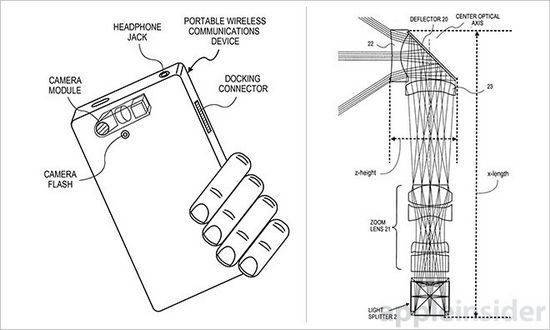Featured Products
Apple has patented a new image sensor that includes a light splitter capable of sending light to the sensor’s three pixel arrays for each color of the RGB space.
It has been a while since the image sensor world was revolutionized. Although companies are patenting lots of interesting technologies, the most common units are Bayer arrays. Sigma is making lots of progress with its three-layer sensors, while Fujifilm is praised for the image quality provided by the X-Trans sensors.
However, more is needed and it seems like Apple is aiming to bring back a version of a technology which has not gained much popularity. The smartphone maker has patented a special sensor that includes a light-splitting prism, sending different colors of light to three color channels.

Apple has patented a new camera sensor module, which includes a prism that will split the light and will direct it to three different pixel layers – each layer for colors of the RGB space.
Apple three-sensor patent describes an image sensor with a light splitter
Dubbed as Apple three-sensor, this technology has been patented in the US. In simple terms, the sensor is actually multi-layered, as it consists of three sheets of pixels: one for the blue color, one for the green color, and the last one for the red color.
In order to make sure that as much light as possible hits each individual channel, a prism will be placed between the pixel layers. Once the light hits the splitter, each color will be sent to its corresponding channel.
This means that color reproduction will be improved over current technology. Moreover, there will be little to no light loss, as there is no need for a Bayer filter, which usually blocks a part of the incoming light.

Apple might have to make its smartphones bigger and thicker in order to make room for its three-sensor technology.
There are a few issues for the time being. The Apple three-sensor technology is aimed at smartphones. The US-based company is known for launching thin handsets and, judging by the patent description, this imaging sensor will measure about 18mm to 32mm in length.
The bigger size may be worthwhile because the whole system will include both optical image stabilization and a lens with optical zoom. However, it remains to be seen whether Apple will find a way to minimize the whole system or it will make its phones longer and thicker.
Three-CCD cameras are similar, while Panasonic is working on Micro Color Splitters
A similar technology has been implemented in three-CCD cameras. Incoming light hits a special prism that directs light to three different pixel sheets. Each pixel sheet corresponds to a color of the RGB space. However, this technology is not veryular, as conventional CMOS and CCD technologies are the most used systems in today’s digital imaging world.

This is how a light-splitting prism acts inside a cube. A similar system has been patented by Apple.
Another company experimenting with light splitters is Panasonic. The manufacturer has revealed a technology that offers improved light transmission thanks to something called Micro Color Splitters.
Panasonic’s technology is using diffraction and its sensor is twice better as a Bayer-based sensor when it comes to low-light performance. Companies are patenting new systems all the time, so do not hold your breath over seeing all these technologies in soon-to-be-released cameras.






































